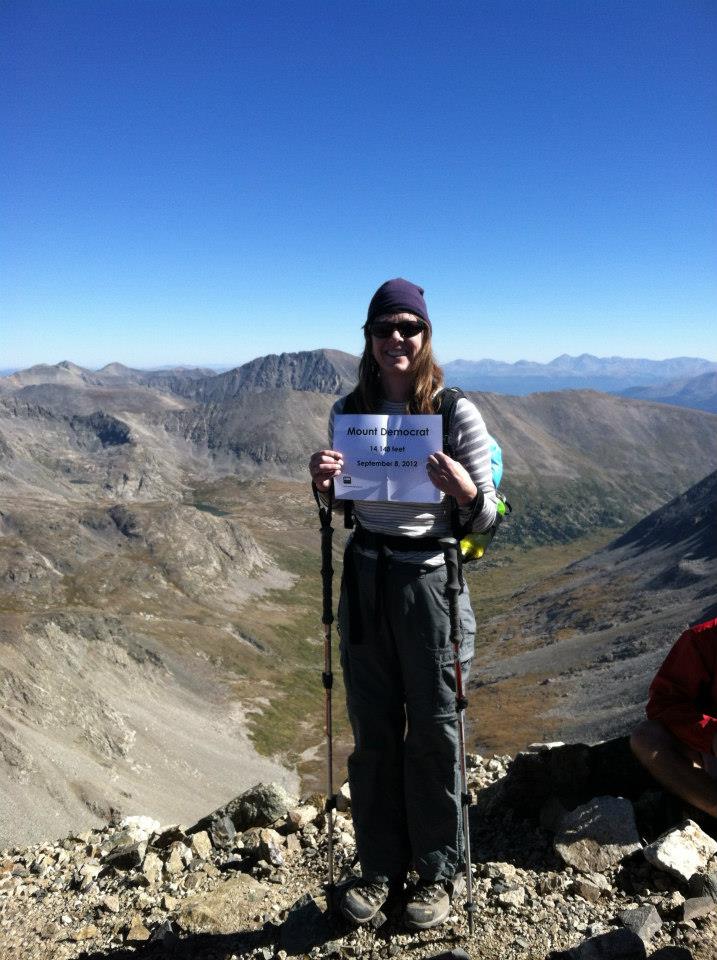As a Park Ranger, I have often been asked about mountain lions and the dangers they pose. It’s probably the single biggest worry most visitors seem to have about hiking in national parks. But my favorite statistic about mountain lions doesn’t say so much about them, as it does about what’s the biggest risk to visitors hiking in the Rocky Mountains. You are 650 times more likely to be struck by lightning than be attacked by a mountain lion. Yet every summer, people caught up in Summit Fever put themselves in grave danger by hiking under the most dangerous circumstances. Summit fever is typically defined as the state of mind in which a person fails to notice severe changes in weather conditions, route conditions, physical exertion and refuses to take them into consideration in their desperate quest to reach the summit.
We’re getting into the time of year referred to as the “monsoon” season here in Colorado. Every summer during July and August, moist air from the Gulf of Mexico flows up north. Combining that moisture with the cold air from the mountains almost guarantees afternoon thunderstorms, sometimes even morning thunderstorms. Combine that weather forecast with thousands of people out hiking Colorado’s highest peaks, and bad things can happen rather quickly.
One of the most famous Fourteeners in Colorado is Longs Peak, located a mere 45 minutes north of our home in Nederland. To summit Longs Peak without technical climbing gear requires a 7.5 mile, hike and climb with a 5000-foot gain in elevation. Needless to say, it’s an all day adventure — or should I say all night adventure? Because Longs Peak is the highest peak north of I-70, it can literally be a lightning rod during the summer months. I can not tell you how many times I drove to Rocky Mountain National Park during the five years we lived here, where bolts of lightning were firing away over the summit of Longs Peak. Often, these storms would come in before noon. So to beat the storms, NPS personnel recommend that hikers begin their ascent as early as 1 or 2 a.m. in the morning, so that they can be safely down below timberline before the thunderstorms roll in.
Every summer in Colorado, stories appear in the local paper detailing tragedy on Colorado’s high peaks of people getting struck by lightning. Just last week, a 32 year old woman who had been married just five days prior was struck by lightning and killed while hiking Mt. Yale, a Fourteener in the Collegiate Range south of I-70. Since it is well known that we get this kind of weather, and the weather forecast usually forecasts these kind of storms at least 24 hours in advance, why does this happen? Summit fever, that’s why.
I’ve had my own brushes with Summit Fever. Two years ago, Bryon and spent a long weekend camping outside of Leadville, with the intent to summit Mt. Elbert and possibly Mt. Massive. We got up around 4 a.m. to the sound of rain, and embarked on our ascent of Colorado’s highest peak, Mt. Elbert. The entire way up, black clouds loomed all around us. You could see it was storming over nearby mountains. I deferred judgment of whether to turn around to Bryon, the meteorologist. We pushed so hard for the summit, that we didn’t even stop to eat or drink. The last half-mile was agony for me, I was bonking pretty badly, but wanted to make the summit, despite the threatening weather all around us. As soon as I got to the top, Bryon immediately urged me to turn around. “I have to get a picture” I implored of him. We were lucky that day — the bad weather blew north of us, and we were able to get down safely.
Summiting mountains is a quest for many, and gives you bragging rights around the campfire or at the local bar. Many have tried (and some have succeeded) in summiting all 54 of Colorado’s 14,000-foot peaks. But that can come at a cost. When you get up in the middle of the night, with the express intent to summit Longs Peak, and then you make it to within a few hundred feet only to have black clouds billowing in, it’s hard to give up that dream of making the summit only to turn around. Turning around is no guarantee of safety, as once you go past the keyhole, there is no quick descent, as you pick your way along the exposed ledges. Still, for those of us who live here, you can always tell yourself, I can do this another time – next weekend. It’s even harder to turn around if you are someone who’s come 1000 miles from across the country to summit the famous Longs Peak. Because that person thinks they probably won’t ever get the chance to do it again, so is even more inclined to fall victim to Summit Fever. But that small lapse in judgment can have big consequences, and may even take a life. My motto when hiking or climbing is “live to see another day.” It’s a good thing to think about when you see those dark clouds start to roll in.


